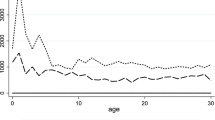Abstract
One of the most concrete tools to estimate research, development and innovation (RDI) investments is cash flow earnings simulation, which estimates return on capital employed. The simulation of cash flows earnings enables a comparable assessment of the returns on various investments related to research, development and innovation. It also facilitates the presentation of profitable research and development projects. This article describes why cash flow earnings is excellent way to predict the success of the coming RDI-Investment and reduce the risk of investment to fail and how to utilize it. In addition, the article also gives insights how the attitude towards RDI affected to the cash flow earnings on several Finnish SME-companies.
Access this chapter
Tax calculation will be finalised at checkout
Purchases are for personal use only
Similar content being viewed by others
References
Alasoini, T.: Mainettaan parempi työ. Finnish Business and Policy Forum EVA. Helsinki, Finland (2010). ISBN 978-951-628-508-8
Viljamaa, A., Tall, J., Varamäki, E., Singer, S., Durst, S.: Business transfer ecosystems and awareness raising activities: situation analysis of five European countries. Publications of Seinäjoki University of Applied Sciences B. Reports 108. Seinäjoki, Finland (2015). ISBN 978-952-7109-33-5
Schwab, K.: The fourth industrial revolution. World Economic Forum. Geneva, Switzerland (2016). ISBN 978-1944835002
Karjalainen, R.: Kassavirran hallinta ja suunnittelu Talgraf Oy:n Accuna-kassaennusteohjelmalla. Lapland University of Applied Sciences, Finland (2020)
Rajendra, R.: Handbook of Global Corporate Treasury. Wiley, Somerset (2013). ISBN 978-1118122839
Pitkänen, A.: Cash flow forecasting proposal for new long-term cash flow forecast in the case company. Helsinki Metropolia University of Applied Sciences, Helsinki, Finland (2016)
Raitala, L.: How to improve cashflow management in the case company. Turku University of Applied Sciences, Turku, Finland (2020)
Wasastjerna, C.: Talous ja rahoitus. Johdon raportointi ja ennustaminen. Sisäisen raportoinnin kehittäminen. Bonnier Pro. Helsinki, Finland (2020)
Hall, B., Lerner, J.: The Financing of R&D and innovation. In: Hall, B.H., Rosenberg, N. (eds.) Handbook of the Economics of Innovation, vol. 1, pp. 609–639. Elsevier. (2020) ISBN 978-008-093-11-11
Koski, T.: Pk-yrityksen strateginen talousjohtaminen. Chamber of Commerce, Helsinki, Finland (2017). ISBN 9789522464859
Bragg, S.M.: Treasury Management: The Practitioner’s Guide. Wiley, Hoboken (2010).ISBN 978-0-470-59120-8
Penttinen, M., Raitala, L., Reunanen, T., Kantola, J.: The effects of leadership and management to organizational atmosphere and the impact to cash flow earnings: a study from SME-companies in Finland. In: Kantola, J.I., Nazir, S., Salminen, V. (eds.) AHFE 2020. AISC, vol. 1209, pp. 161–166. Springer, Cham (2020). https://doi.org/10.1007/978-3-030-50791-6_20. ISBN 978-3-030-50791-6
Penttinen, M., Holopainen, T., Raitala, L., Rosala, L., Kantola, J.: The dividers for continuum of business in business transfer situations and impacts to cash flow earnings: a study from SME-companies in Finland. In: Kantola, J.I., Nazir, S., Salminen, V. (eds.) AHFE 2020. AISC, vol. 1209, pp. 180–186. Springer, Cham (2020). https://doi.org/10.1007/978-3-030-50791-6_23. ISBN 978-3-030-50791-6
Acknowledgments
Special acknowledgments to a senior member of the Finnish management consultants association LJK, Mr. Riku Lehtinen, who’s over 40-years of lifework and experience with cash flow earnings enabled this study.
Author information
Authors and Affiliations
Corresponding author
Editor information
Editors and Affiliations
Rights and permissions
Copyright information
© 2021 The Author(s), under exclusive license to Springer Nature Switzerland AG
About this paper
Cite this paper
Penttinen, M., Rantala, J., Holopainen, T. (2021). The Effect of Research, Development and Innovation (RDI) on Companies’ Financial Activity Capabilities: A Case Study of SME-Companies in Finland. In: Kantola, J.I., Nazir, S., Salminen, V. (eds) Advances in Human Factors, Business Management and Leadership. AHFE 2021. Lecture Notes in Networks and Systems, vol 267. Springer, Cham. https://doi.org/10.1007/978-3-030-80876-1_29
Download citation
DOI: https://doi.org/10.1007/978-3-030-80876-1_29
Published:
Publisher Name: Springer, Cham
Print ISBN: 978-3-030-80875-4
Online ISBN: 978-3-030-80876-1
eBook Packages: EngineeringEngineering (R0)




